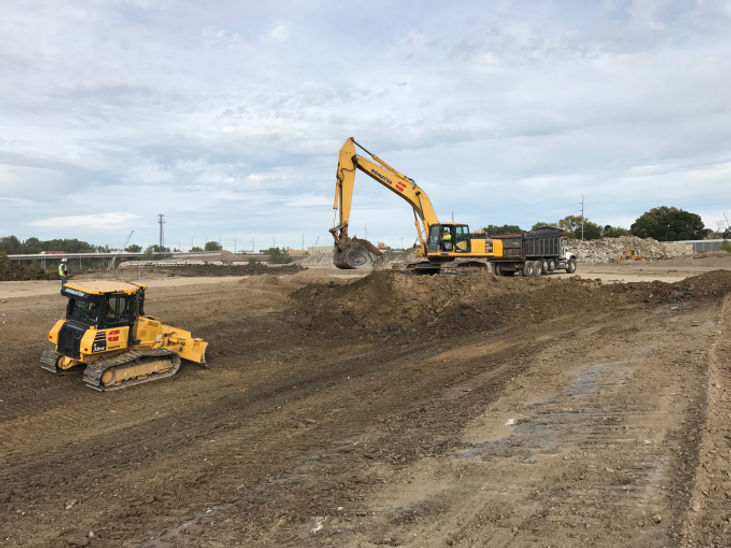
excavation for roads
When a new road is being built, significant excavation is often required through the existing earth to make way for aggregate bases and lifts of asphalt or concrete. A typical crew makeup for road excavation will be 3 operators, one laborer, and several trucks for moving and hauling excess material offsite. Common equipment utilized for such excavation is a bulldozer, an excavator, and a sometimes a loader.
First the road must be laid out with stakes showing both the horizontal restraints of the new road layout and the vertical restraints of the new roads grade. Typically ‘rough’ stakes are requested if the road is new and traffic does not need to be maintained. Rough stakes show basic cut and fill dimensions which are written on the stake showing how deep the cut and how much to fill in the road to achieve the final elevations. Then if organic material or topsoil exists on the surface it must be removed as it is considered unsuitable in terms of a pavement subgrade. The highly organic material can decompose, retain moisture, or deteriorate over time causing voids in the subgrade and settling.
For bulk excavation of a road, the most important thing to consider in terms of productivity is having the right number of trucks available to receive the material directly from the excavator (preferably) in order to keep the equipment busy, reduce the number of times the material is handled, and to avoid waiting. The bulldozer will usually scrape and push the material into a scoopable pile for the excavator boom and bucket to pick up and place in the truck. Having the trucks adjacent to the excavator will speed up excavation time, but the logistics of the site often only allow for the truck to be behind the excavator requiring it to spin 180 degrees.

Haul distance to dump site (if spoils are to be taken off site) is a critical factor on both round trip time and number of trucks needed. Heavy traffic on haul road, access in and out of site, size of excavator bucket, and size of truck also play into the productivity of excavation as well.
The road is often cut 6-12” past the edge of road or curb, and will require backfill operations after installation of the road/curbs. A ‘grade checking’ task is often taken on by the laborer making him the set of eyes on the ground directing the excavator/dozer operators on how much earth to cut. Once the road is cut to the proper elevation, a roller (often vibratory) is used to compact the subgrade. As long as the subgrade is stable and does not rut, push, or show signs of weakness, the stone base operation can begin next.
